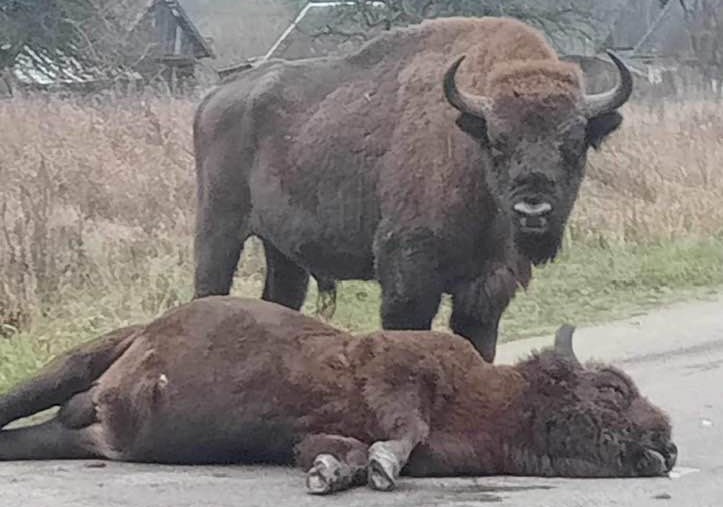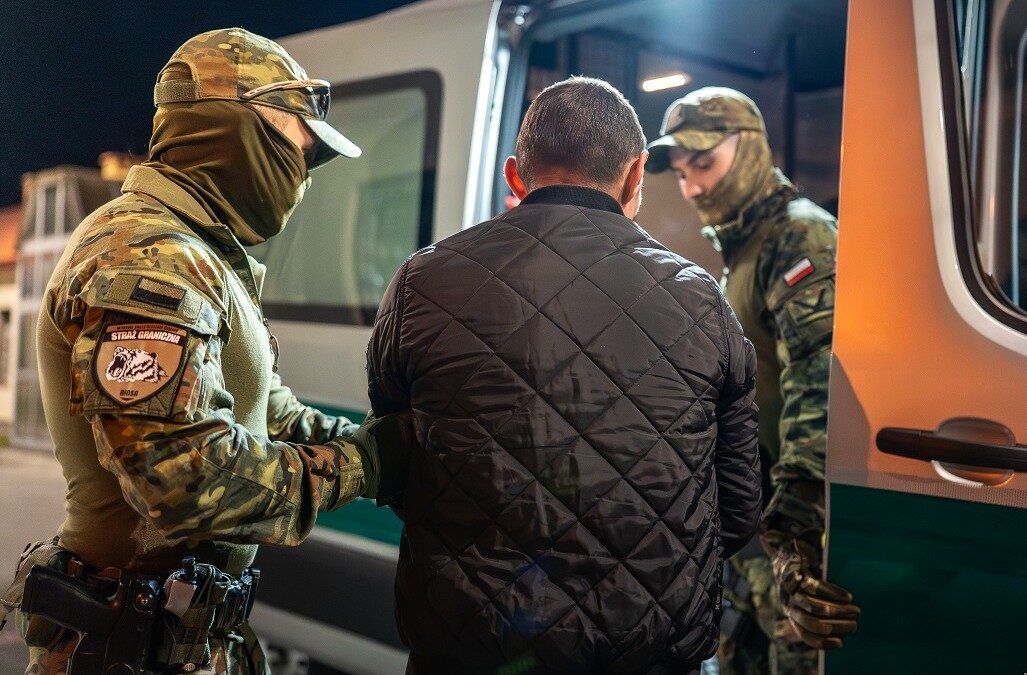A bison has died after being hit by a military truck in northeast Poland. The death of the animal – which is a protected species and an iconic symbol of Polish nature – has angered wildlife activists and locals, who say that military vehicles often drive at high speeds through the area.
But the army, which is investigating the case, says the indications so far are that the driver was not at fault for the accident, which happened after the bison suddenly entered the road.
The incident occurred yesterday morning between 7 and 8 a.m. in Stare Masiewo, a small village near the border with Belarus. According to residents’ accounts who spoke to news website OKO.press, two bison had earlier been seen walking along the road.
Symbol upadku tej władzy.
W miejscowości, gdzie obowiązuje ograniczenie prędkości do 30 km/h, wojskowe pojazdy jeżdżą 2, 3 razy szybciej.
Osiem lat fatalnych dla Polski rządów @pisorgpl kończy się tragedią na drodze.
Symbolicznie.
⤵️https://t.co/xS8jJVPt0h pic.twitter.com/RZD6gIjqvf— Jacek Liberski 🇵🇱🇺🇦🇪🇺🇺🇸🏳️🌈 (@jacek_liberski) November 13, 2023
A Jelcz military vehicle then hit one of them with such force that the animal, which weighs around 600 kgs (1,323 lbs), was pushed at least a dozen metres along the road.
The surviving bison – a five-year-old male named Poradek – reportedly refused to leave his dead companion until its body was taken away. The name, sex and age of the animal that died has not been reported.
The incident was first reported to the broader public by wildlife activist and journalist Adam Wajrak, who shared s local resident’s photo on Facebook.
Military police were called to the scene of the incident along with representatives of the Białowieża National Park, which is located next to the village, and the Bison Breeding Centre, a unit of the park responsible for protecting the animals.
“The animal probably emerged suddenly on the road, and the driver did not have time to brake,” Major Anna Soliwoda of the Podlasie Military Task Force told broadcaster TVN24. “The military police is handling the case.”
A spokesman for the military police, Iwo Sawa, told the Rzeczpospolita daily that the driver had been punished as “circumstances do not indicate that he contributed to the incident”. The driver was tested for alcohol and found to be sober. Sawa also confirmed that other soldiers were travelling in the truck but none had been injured.
The Polish authorities have denied that the death of a bison pictured on the border with Belarus was caused by a razor-wire fence erected to stop crossings by migrants.
But an environmental journalist says the area has become a "death trap for animals" https://t.co/kxIKfb8gL4
— Notes from Poland 🇵🇱 (@notesfrompoland) January 21, 2022
Local residents, however, told OKO.press that military vehicles regularly travel well above the 30 km/h (18.6 mph) speed limit on the road in question. The area has since 2021 seen an increased military presence in response to a migration crisis on the border with Belarus. Troop numbers were further boosted this year.
”These trucks drive this way several times a day because they carry soldiers on shifts to the border,” said Julita Toczyska. “More than once they have passed me on the road without even slowing down. They often speed like mad.”
“At what speed does a truck have to travel to kill a bison?” another resident, not mentioned by name, said to OKO.press. “The bison is big and heavy. Right next to where this bison was hit, there is a children’s playground and a village hall. It could have been any of us, it could have been a child.”
A huge herd of bison, containing up to 170 of the animals, has been spotted in Poland.
Scientists say it is the largest they have ever seen https://t.co/2DnXdbAYCo
— Notes from Poland 🇵🇱 (@notesfrompoland) January 20, 2023
The forests around Stare Masiewo are home to 829 of Poland’s 2,600 bison, according to data from February 2023. After being hunted to extinction in the wild by the early 20th century, a successful breeding programme has resulted in Poland now having a quarter of the world’s population of European bison.
According to OKO.press, bison have become a more common sight in the region since the government built a wall on the border last year to prevent migrants from crossing.
At the time, scientists and environmentalists warned that the 187-km barrier – which runs through forests, wetlands and meadows that are home to many rare species – would have a negative impact on wildlife, including by blocking animal migration paths.
Scientists have raised concern over the environmental impact of Poland's new anti-migrant wall on the Belarus border.
The government says adequate measures, such as animal gates, are in place, but there remain questions over how they will work in practice https://t.co/g3z3GX7etc
— Notes from Poland 🇵🇱 (@notesfrompoland) September 5, 2022

Notes from Poland is run by a small editorial team and published by an independent, non-profit foundation that is funded through donations from our readers. We cannot do what we do without your support.
Main image credit: Adam Wajrak/Facebook

Alicja Ptak is deputy editor-in-chief of Notes from Poland and a multimedia journalist. She has written for Clean Energy Wire and The Times, and she hosts her own podcast, The Warsaw Wire, on Poland’s economy and energy sector. She previously worked for Reuters.



















